Shastri's Victory story is Unforgettable
On

Pro. Rameshwar Mishra Pankaj
In August-September 1965, Kashmir was invaded again by Pakistan in the course of its wicked policy. This effort was repeated after 1947-48. Due to Prime Minister Shri Lal Bahadur Shastri's sensible and patient policy and conduct of war, this time Pakistan has suffered badly overcame it. In fact our forces had reached Lahore this time and if Shastriji wanted, General J.N. Under the leadership of Chaudhari, Indian forces would have captured the whole of Pakistan and again made it an easy part of India. This made both the United States and the Soviet Union increasingly active and put pressure on India. In fact, after the Second World War, it was the largest war in terms of cannon warfare. But since 1947, the way Shri Jawaharlal Nehru had allowed the Soviet Union and the United States to put pressure on India's internal affairs repeatedly, because of this, suddenly the fearless and stunning national leader Lal Bahadur Shastri was able to ignore these international pressures. It was not possible either.
In fact, from April 1965, Pakistani forces started secretly entering the Indian border. Pakistan named it 'Operation Gibraltar'. Just as Europe with the help of Gibraltar intervened in Asia, similarly Pakistan was working by planning intervention in India and hence it was named Operation Gibraltar. The purpose by this was that Pakistani forces should enter Jammu and Kashmir and by calling it a rebellion of the people of Pakistan Occupied Area against the Indian rule carry forward the campaign to separate India from India. About 30 thousands of Pakistani soldiers have already crossed the Line of Control in an attack to enter India and preparations were to enter a batch of soldiers behind them.
In those days Sarvepalli Dr. Radhakrishnan was the President of India and Ayub Khan was the President of Pakistan. Gen. J.N. Along with Chowdhary, the Western Command Commander Lt Gen Harbakhsh Singh and Lt Gen Doon, Lt Gen Joginder Dhillon and Lt Gen Kashmir Katoch led the Indian forces displayed amazing valor. Because this time on his head was the hand of a fearless and judgmental leader like Shastri ji. On behalf of Pakistan, Musa Khan and Bakhtiyar Rana and Atikur Rahman etc. also showed valor but they could not stand in front of the Indian forces. About three lakh soldiers from Pakistan entered the war. Along with this 756 guns and 280 fighter aircraft were also fitted. 352 Patton tanks, 308 Sarman tanks and 96 Chaffers, thus 756 tanks were thrown by Pakistan. Only 720 tanks were put in the war from India. But 700 fighter jets of our Air Force made rapid bombardment, cutting off Pakistani armies from place to place and stopping their contact and Indian aircraft started hovering in the sky of Lahore. This caused great panic in Pakistan and they called on both the United States and the Soviet Union. Pakistan put 552 artillery on the front. Then India also had to bring down its artillery. 6 divisions of infantry and two armored divisions were pushed forward by Pakistan to occupy Kashmir. Indian forces snatched 300 tanks of Pakistanis and gave martyrdom to 4000 soldiers in the battlefield. We also snatched 20 of their aircraft and the Indian forces completely captured the area of 1840 square kilometers of Sindh, Lahore, Sialkot and Kashmir. Pakistani forces had penetrated into our Kashmir area for about 500 square kilometers. Indian forces captured almost quadruple Pakistani territory from him. About 6000 Pakistani soldiers were taken prisoner by our army.
A ceasefire had to be declared under pressure from both the US and Pakistan. The defeat of Pakistan was obvious and the victory of India created a unique atmosphere of joy and gaiety in the nation of India. In fact, both countries had bought military weapons from the United States and England. But at the last moment both England and America withdrew. Due to this, India had to take help from the Soviet Union and Pakistan took help from China. but then soviet the union pressurized the treaty and the heads of both the countries were called to Tashkent. The intense war lasted 1 month 18 days from 5 August to 23 September 1965.
The Pakistani artillery, moving towards Khemkaran, attacked Amritsar with the intention of capturing and tried to capture the bridge over the Beas river leading to Jalandhar. Indian forces attempted to capture Lahore and Sialkot. Pakistan was very proud of the Patton tanks it had bought from the United States. Indian forces destroyed 97 Pakistani tanks by bombing. A rogue named Pir Pagaro, a rogue follower of Pir, the Pakistanis, being familiar with the desert area, 'attempted to inflict great damage on the Indian forces in the region of Sindh. In the village of Rajasthan bordering the Pakistani border, he had already kept his brokers at different places. But in the end all his tricks were foiled by the Indian forces. This was the first time that the air forces of both the countries fought fiercely. The Indian Air Force inflicted heavy damage on Pakistani fighter planes through Indian-made Hawker Hunters. The Indian Army's MiG-21 Air Force contingent also showed great valor. Although Pakistan had better aircraft bought from America.
To get rid of its shame, as usual, Pakistan falsely propagated that it was victorious. But at the same time he continued to beg both the United States and the Soviet Union to somehow stop the war. It quickly began ordering additional fighter jets from Iraq, Indonesia, Iran, Turkey and China. Pakistan claimed to have destroyed 60 Indian planes. Whereas according to him only 20 Pakistani aircraft were destroyed. But in spite of these claims Pakistan was completely defeated and hence was pleading everywhere for a treaty.
The Pakistani navies also threw heavy bombardments to destroy the radar of the Indian Navy at Dwarka. He claimed that we have captured the aircraft carrier INS Vikrant of the Indian Navy. But this claim was later refuted by many writers of Pakistan's defense affairs themselves. The main ones are Iqbal Qadir, who himself wrote this in the Defense Affairs magazine of Pakistan.
New York Times reporter Arif Jamal wrote in his book 'Shadow War' - 'This time India's victory was complete, sure. India accepted a ceasefire when it occupied 1900 square kilometers of Pakistan's territory. Whereas Pakistan was able to make headway only in 540 square kilometer area of Jammu and Kashmir. Pakistan also continued to claim its victory but the truth is that India was clearly victorious. Devin Haggerty wrote in his book 'South Asia in World Politics' (South Asia in World Politics) - 'Indian armies completely outnumbered Pakistani forces and Indian forces reached the border of Lahore city. On 22 September 1965, when the United Nations intervened and led to a ceasefire, Pakistan was clearly badly defeated.
Gerjan Dijkink writes in his book 'National Identity and Geopolitical Visions' (National Identity and Geo-political Visions) Bhu-Ra - 'Indian forces are undoubtedly 'superior' to the Pakistani army. He won a decisive victory. Indian armies were occupied in the border of Pakistan. Had the United Nations not intervened by force.'
Stanley Wolpert writes (in the book India) - 'The Indo-Pakistani War was stopped after 3 weeks. Because America's fleet had arrived and was pressuring for a ceasefire. India was in a state of victory when the armistice took place. He was in a position to capture Lahore, the capital of the Punjab province of Pakistan or was in a position to inflict heavy losses on him and had complete control over the Uri-Poonch region.
Which is very important from the strategic point of view.David Van Progh writes in his book 'The Greater Game India's Race with Destiny' (India's Competition with Destiny is a New Political Game) – 'India had indeed won the war. He occupied 1840 square kilometer area of Pakistan, out of which 640 square kilometer was in the area of Kashmir occupied by Pakistan and 460 square kilometer in Sialkot area and 380 square kilometer in Sindh area and 360 square kilometer in Lahore area. Whereas Pakistan was able to advance only in an area of 50 sq km in Khemkaran and 490 sq km in Chhamb region. (The first 'Great Game' is said to be the geopolitical competition between British India and the Soviet Union. In which the Communists of Russia in England in the bargain a large area was handed over to the party in exchange for that the party had sided with England against Germany. That's why it was called the Greater Game).
William Carpenter and David Winek in their book 'Asian Security Handbook - Terrorism and the New Security Environment' (The Handbook of Asian Security - Terrorism and the New Security Environment) wrote that the 1965 war was waged by Pakistan with the intention of snatching Kashmir from India. It was a fierce battle, though it lasted only a short time. It ended with the arrival of Indian forces in Lahore. In fact, only with the intervention of the United Nations, the borders of both the countries could remain the same. Although this proved that Pakistan can be broken at any time.
The famous English historian John Kea has said in his book on India. The Indo-Pak war of 1965 lasted only for a month. Pakistan gained some edge in the desert of Rajasthan. But Indian tanks not only stopped his advance on the Jammu-Srinagar route, but pushed him back and drove him away and the Indian forces reached Lahore. Thus it was time for India to celebrate victory.'
Seeing this victory of India leading to the fragmentation of Pakistan, the United Nations Security Council unanimously passed a resolution on pressure from the United States asking both the nations to stop the war. Although it was clearly stated that Pakistan's forces tried to annex Kashmir by force but failed. However, a ceasefire is necessary. So that the sovereignty of both the countries remains. India immediately accepted the proposal of the United Nations. But Pakistan according to its habit tried to capture Chananwala village in Fazilka area. Indian forces drove them away.
But India did not get any advantage in this war of doing first in the so-called neutrality movement. On the contrary, Indonesia helped Pakistan itself. Religious unity proved to be more powerful than political unity. The Premier of the Soviet Union Leonid Brezhnev also did not openly help India during Shastri's time due to the absence of old Soviet colleague Jawaharlal Nehru. Instead, he called the two countries to Tashkent on the advice of the United States. Published in 'Time' magazine - 'Everyone knows that India has been victorious and is emerging on its own strength as a great Asian power. The Prime Minister of India, Lal Bahadur Shastri is a national hero in India. The whole country throngs for him.
Devin Gerty has written that in 1965, India accepted the proposal of a prisoner of war in a hurry. He should have stayed a bit. Jeremy Black, famous as a war historian, has also written in his book 'War in the Modern World Since 1815' (History of Wars in the Modern World after 1815 AD) that 'Pakistan was badly defeated in the 1965 war. But India's urgency to negotiate saved Pakistan further losses. Whereas by then Pakistan had shed 80 percent of its armed force and its complete defeat was very near. Arjan Singh, the then Chief Marshal of the Indian Air Force, has written that in fact India had to ceasefire due to international pressures.
The Soviet rulers were playing their game in Tashkent and wanted a communist-leaning prime minister in India. He put a lot of pressure on Shastriji and the Tashkent Pact was concluded. Shastri ji was found dead in the morning under mysterious circumstances. It is believed that they were poisoned in the food. For this, his cook was changed on the last occasion.
As a result of Shastri's death, Nehru's daughter Indira Gandhi became the Prime Minister of India and she intensified her inclination towards the Soviet Union. Communists in India hold high positions began to be given.

Lal Bahadur Shastri was a well-known national leader of India and he is revered in the Indian public mind as a virtuous, determined, fearless and patriotic leader. His memory is rich in Indian history. He had displayed decisive valor in defeating Pakistan and under him Pakistan would have been completely under Indian occupation the next time such an attempt was made. That is why the international pressure was increased on them because the task of creating an 'enemy-state' within India was also done by the international powers fearing the possible rise of India's power after the Second World War.
Tags: patanjali patanjali wellness yog sandesh education india bharat university of patanjali bharat swabhiman patanjali yog samiti swami ramdev ji maharaj patanjali gurukulam acharyakulam patanjali research institute Acharya balkrishna patanjali yogpeeth patanjali yog sandfdesh yog gram yog guru haridwar devbhumi mahila patanjali yog samiti patanjali ayurvedic hospital lal bahadur shastri Shastri's Victory story is Unforgettable
लेखक
Related Posts
Latest News
01 Sep 2024 17:59:05
जीवन का सत्य 1. पराविद्या- मनुष्य जब ईश्वरीय सामथ्र्य अर्थात् प्रकृति या परमेश्वर प्रदत्त शक्तियों का पूरा उपयोग कर लेता...



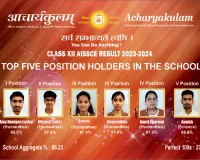
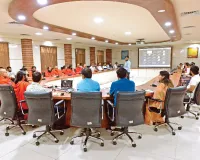
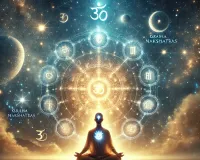
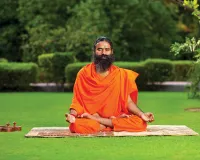
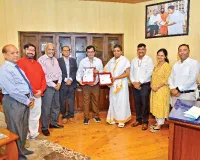
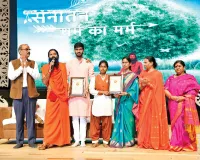

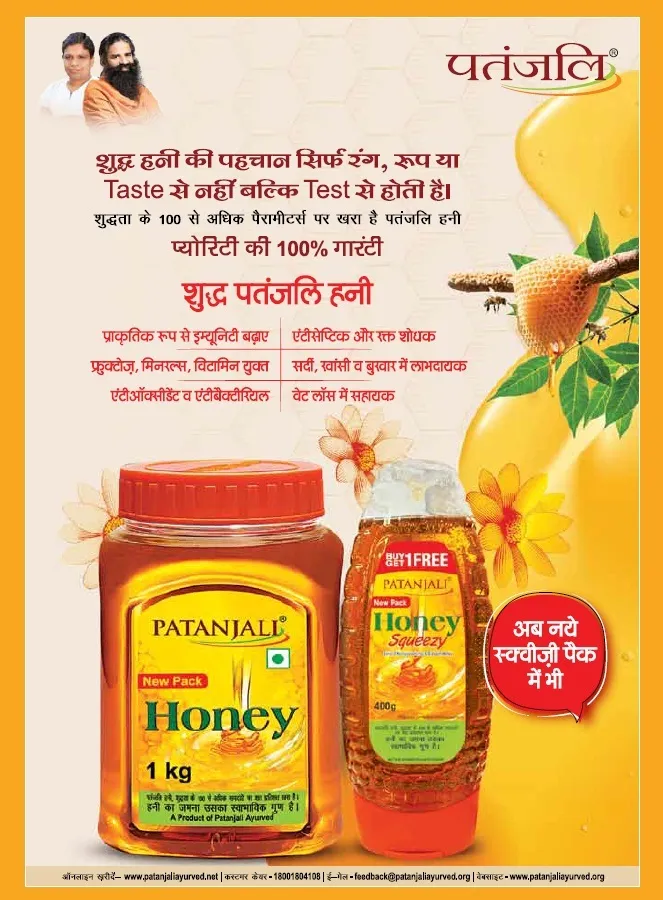
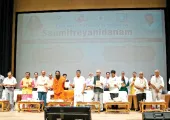

.jpg)
.jpg)





